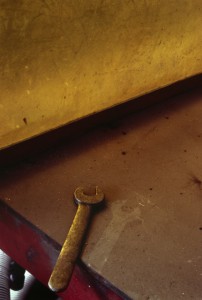
In Allan Sekula’s engagement with the sea, the film and book “Fish Story” shows us of the lives of people living out in the sea and also lives of people working in the ports part of the trades that he took during his travels to industrial ports around the world. Among his photos that he took, it shows a change of labor in the ports works. I feel his photo “Welder’s booth in Bankrupt Todd Shipyard. Two years After Closing.” speaks a lot about how the port works nowadays. The neglected spanner felt like a representation of manual labor. Since the photo is taken in a port, it feels like with today automated container ports, there are getting lesser manual labors in ports and many stuff are handle by machine and welding. There are still labor handling the machine and welding of pipes, however there isn’t a need for that much people to do manual labor.
While in the 16th century, there aren’t things such as machines or automated containers to help out in the ports. Majority of the stuff are handled by number of men that the captain has on his ship and also how much one labor’s strength is.
In Allan Sekula’s “Fish story”, he quoted from George Keyes:
“ …a ship is not an inanimate object but a complex manned entity that is rarely depicted in isolation; by its very nature it is related to a larger visible or implied whole. Not only are these ships some of the most complex products of seventeenth-century engineering, but their inherently human presence arouse our interest. Once we realize that they are pitted against the elements or against each other we become absorbed in their destiny. By implication the subject is dramatic because there must be an outcome: survival of destruction—victory or defeat.”
This quote made me think that people in the 16th centuries are amazing. To be able to do trades via sea is not an easy task. Just imagining that when a merchant does his trades, he has to carry and ship stuff from one country to another. And without knowing where land would soon be seen is something that I feel personally it takes a lot of courage and risk along the way. While now we have devices to tell us of where we are out at sea.
Reference:
http://monoskop.org/images/8/86/Sekula_Allan_Fish_Story.pdf
http://education.asianart.org/explore-resources/artwork/arrival-portuguese-ship-1620-1640